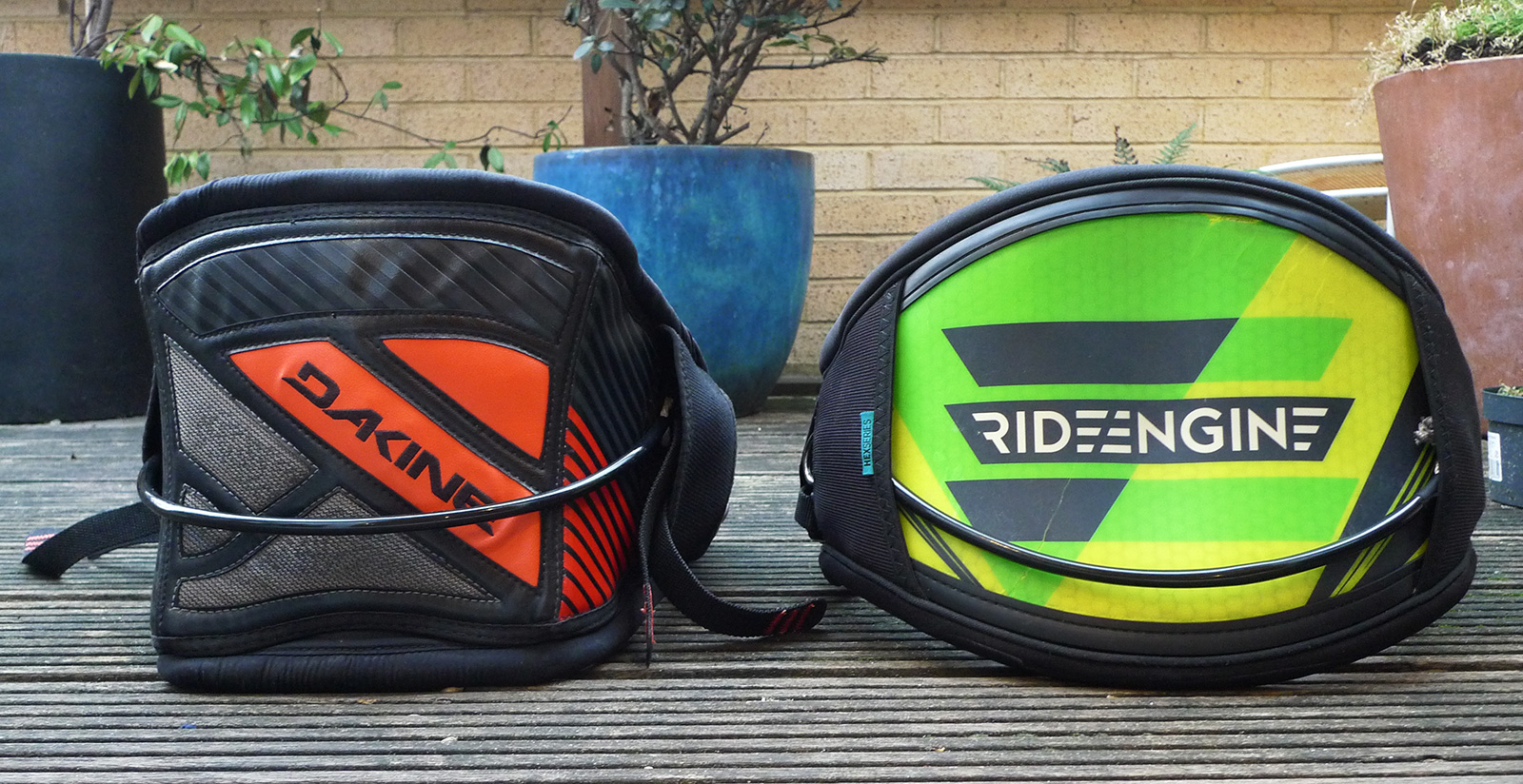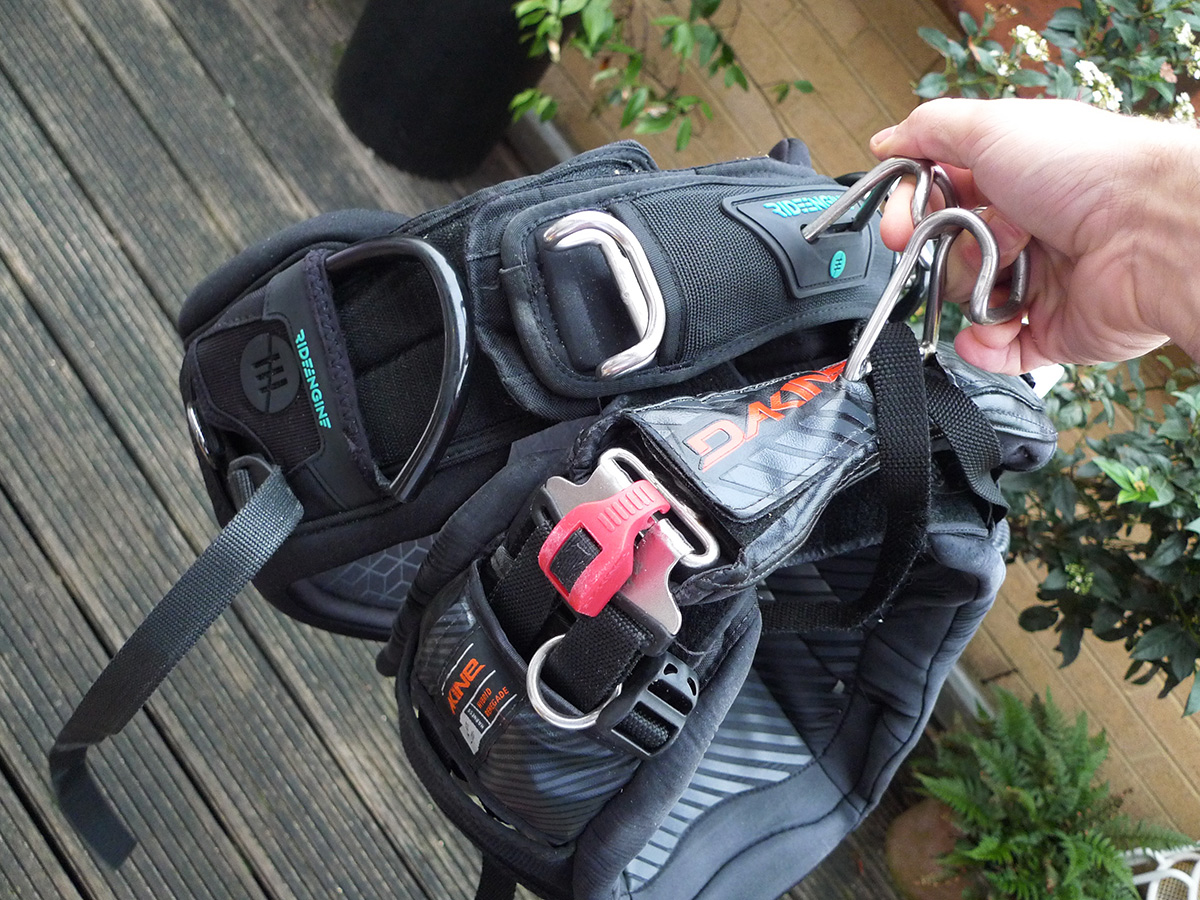Not all harnesses are created equal. Yet, nothing rocked the slow-moving domain of kitesurf harness development as when Ride Engine released their first publicly available harness back in 2015.
What makes these harnesses so special and groundbreaking is the shift from a padded fabric-based back support to a padded stiff material, say plexiglass or carbon fibre. A hard material evenly distributes the load from the pulling kite and prevents the harness to squeeze your ribs and organs. Because the hard-shell harness is stiff it also needs a lot less surface area in the back, leading to an overall smaller profile and better manoeuvrability for the rider.
I’ve never had any big problems with my soft-shell harnesses before, after all this was the standard and no-one really complained unless they had back issues and often resorted to a seat harness. Still, everyone I spoke to who had tried a Ride Engine harness said they’re never going back to soft-shell so I was definitely curious to try one out and see what the hype was about. Since 2015 the major harness producers, including Dakine, Mystic and ION have all followed suit which should be an indication as clear as anything that Ride Engine was onto something of real significance and not only another marketing ploy.
One day, after a particularly rough winter session, which made my back complain a lot I pulled the trigger on a second hand Ride Engine Hex Core harness to find out which one would come out as a winner in a face-off; my Dakine Hybrid Renegade soft-shell or the much hyped Ride Engine Hex Core hard-shell.
In red corner, representing soft-shell: Dakine Hybrid Renegade
The Dakine harness is a well-built, all-round harness with the same low profile as their hard-shell model, the C-1. Like most harnesses it rides up a bit, and maybe because of its low profile it also dug in to my back making long sessions more apparent than my previous Dakine Pyro harness (the ultimate freeride harness). I really like Dakine’s velcro strap solution, quick clip-on lock and overall build quality. As far as soft-shell harnesses go it’s a great harness.
In green corner, representing hard-shell: Ride Engine Hex Core
The 1st generation Hex Core from Ride Engine was the first commercially available hard-shell harness for kitesurfers, and is a really good product. Build quality is superb, and the killer feature is of course the hard plate supporting your lumbar. It locks in and doesn’t ride up or slide around, while providing great mobility thanks to its slim outline. It lacks some of the bells and whistles compared with the Dakine, and the close mechanism using plastic tubes is maybe a shout at simplicity but doesn’t win me over. Not surprisingly, later models have indeed swapped for a standard metal clip closing solution.
Verdict: Hard-shell is the winner
The best way to describe the difference between a soft-shell and a hard-shell would be the following analogy: A soft-shell gives you support the same way someone wrapping a towel behind your back and holding it while you lean back. The bigger the towel, the more support and comfort you get, but essentially it still squeezes your body under pressure.
A hard-shell on the other hand provides support in the same way someone standing behind you places his palms on your lower back while you lean back. Because the support is solid, the palms don’t need to be large.
That’s how it feels to ride with a hard-shell harness, and it’s hard to imagine why anyone would have a preference for the soft-shell, when both support and mobility is increased with the other type. Maybe if a sliding harness is important, as in wave riding, you’d go with a soft-shell, but with the new rope-type spreader bars even that becomes questionable. The only true benefit with a soft-shell in my eyes is that they are easy to pack as they can be laid out flat, but on the water hard-shell takes the trophy no doubt.
Most pro freestyle riders have already switched it seems, and I’m predicting a massive uptake on hard-shell among us mortals as well in the next few years. This might just be a new standard for harnesses.




